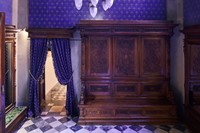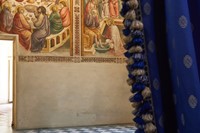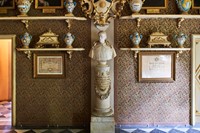Involving Dominican friars, the Medici family, the Black Death, a rediscovered citrus fruit, and the world’s oldest apothecary, the story of Santa Maria Novella and its fragrances is 800 years long
The story of the Santa Maria Novella fragrances begins in the year 1221, when Dominican friars arrived in Florence and set up shop at Santa Maria Inter Vineas, a small church just outside of the city walls. Experimenting with the herbs and flowers growing in the monastic garden, the friars started making soothing balms and remedies to serve the local community.
In 1334, the friars moved into the city after healing Dardano Acciaioli, a rich merchant from one of Florence’s most powerful families, with bearberry extract. In gratitude, he built and gifted them the magnificent San Niccolò-devoted chapel, which still stands today as the brand’s boutique and museum. A decade later, when the Black Death came to Italy and ravaged the country, the friars distilled rose water with the hope of treating the plague, disinfecting water and cleansing houses after an outbreak. Still, in Florence, the devastation was so great that the disease was known for a long time as “the plague of Florence”. In the archives, there still exists a receipt for this Acqua di Rose from 1381.
By the 16th century, the apothecary had established its reputation such that when Catherine de’ Medici needed a personal perfumer to travel with her to the Court of France – where she was to marry Henry II of Valois – she chose Renato Bianco, raised by Santa Maria Novella’s Dominican friars. Catherine, who is often credited as bringing perfumery to France, also commissioned a scent from the friars, designed especially for her, that would recall Florence’s elegance and grace.
The scent was the first perfume to use alcohol as the base instead of the traditional vinegar or olive oil – thus it is, arguably, the first modern perfume – and it is still sold today as the Acqua Della Regina (“The Water of the Queen”). In Paris, Renato became René le Florentin and not only helped spread the art of perfume across the world but, legend also has it, was hired by the queen to create poisons for those enemies she did not wish to kill by the sword.
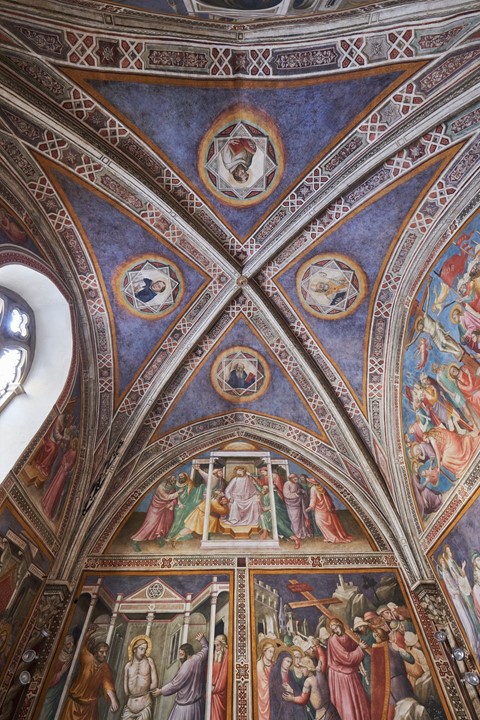
In 1542, the pharmacy doors officially opened to the greater public and in 1612 it was formally recognised with the name of “Officina Profumo-Farmaceutica” by the Grand Duke of Tuscany. Many of the remedies and concoctions created during that time are still available on the pharmacy’s shelves today. A “vinegar of the seven thieves”, used by women suffering from fainting fits, is said to come from a band of seven corpse robbers who used it to protect themselves from the plague; while another remedy was designed to calm “hysterical women”.
It was this rich past that CEO Gian Luca Perris was keen to honour when he joined the brand, which has continued to sell traditional elixirs, along with more contemporary skincare products, oils and soaps, in 2020. The nose and businessman is no stranger to a brand with history having learnt his craft at the French perfume house Houbigant, the makers of the scent which, legend has it, gave Marie Antoinette away while she was trying to escape the French Revolution in disguise.
Last year, with Perris at the helm, Santa Maria Novella launched its first eau de parfum in 800 years: L’Iris, a homage to the city of Florence because the iris has been its heraldic symbol since 1266. This first fragrance was a perfect encapsulation of what Perris is hoping to achieve – a harmonic balance of the old and the new, the deep history of the brand and the city combined with innovation and expansion into new categories and avenues.
“For me, it’s important that Santa Maria Novella doesn’t become a museum,” Perris says. “It is important to keep the roots but also to continue to create innovation. The monks were great at innovation. They were researching new ingredients, making new formulas, and allied with the Medici family to invest in chemistry and in pharmaceuticals.” For him, honouring the past comes in the form of taking inspiration from packaging, aesthetics and the core ingredients, but when it comes to the products and formulations themselves, he is looking forwards.
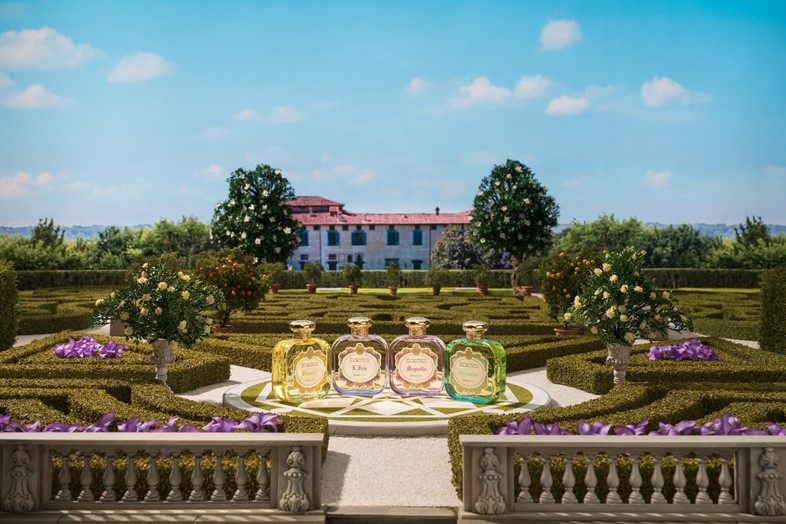
L’Iris became the brand’s number one bestseller, so it’s no surprise that this year it was followed up with three more eaux de parfum: Bizzarria, Gelsomino, Magnolia. The collection, titled “I Giardini Medicei”, is inspired by the fruits and flowers found in the gardens of the Medici villas, Villa Medicea di Castello and Villa Medicea La Petraia.
The Medici family were famous for their patronage of art, architecture and music, but they were also great lovers of botany, and between the 15th and 17th centuries used their gardens to cultivate and experiment with citrus fruits on a pure aesthetic basis: they were meant to be cherished and contemplated, rather than used for anything so pedestrian as culinary or domestic purposes. One of these varieties was the bizzaria fruit, a hybrid of bitter orange, etrog and lemon. First discovered in 1644, the Medici family kept it in their greenhouses and was thought to be lost until it was rediscovered in 1980 among the botanical curiosities of Villa Medicea di Castello. It is this fruit that is at the heart of the Bizzarria fragrance.
Perris and his team would visit the grounds and greenhouses of the villas frequently while developing the perfumes, a time he describes as being like a dream. Different species of plants bloom at different times of the year – the bizzaria, for example, is best in the beginning of winter – so they often needed to go to capture the ever-shifting wonders of the gardens. One of these wonders was a rare breed of jasmine which is the key ingredient of Santa Maria Novella’s Gelsomino fragrance. Originating in Goa, the jasmine was given to Cosimo III De’ Medici in 1688 by the King of Portugal. With an unusually high number of petals per flower, the plant is more similar to a small rose than traditional jasmine.
Cosimo became so obsessed with Goa Jasmine, also known as Gelsomino del Granduca, that he banned cultivation by anyone except his personal team of gardeners, who grew the plant in a secret greenhouse he built especially for that purpose at his Villa di Castello. Called the “Stufa dei Mugherini”, this greenhouse was part of a larger secret garden, the “Ortaccio”, in which other medicinal herbs and flowers were grown. The brand is currently funding the restoration of this secret garden, which has lay abandoned for so long, and the botanical species that filled it with the hopes of restoring it to its former glory.


